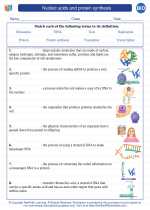Inflammation
Inflammation is a complex biological response of the body to harmful stimuli, such as pathogens, damaged cells, or irritants. It is a protective response involving the immune system, blood vessels, and various molecular mediators.
Causes of Inflammation
- Infection: Pathogens such as bacteria, viruses, and fungi can trigger an inflammatory response.
- Tissue damage: Physical injury, burns, or exposure to harmful substances can lead to inflammation.
- Autoimmune disorders: Conditions where the immune system mistakenly attacks healthy tissues can result in chronic inflammation.
- Chronic diseases: Conditions like obesity, diabetes, and heart disease are associated with low-grade inflammation.
Phases of Inflammation
Inflammation typically involves the following phases:
- Vasodilation and increased vascular permeability: Blood vessels widen and become leaky, allowing immune cells and fluid to enter the affected tissue.
- Migration of leukocytes: White blood cells, particularly neutrophils and macrophages, move from the blood into the tissue to combat the source of inflammation.
- Tissue repair: As the immune response subsides, specialized cells work to repair the damaged tissue.
Key Players in Inflammation
Several key mediators and cells are involved in the inflammatory response:
- Cytokines: Signaling molecules that regulate the immune response and promote inflammation.
- Neutrophils: The most abundant type of white blood cell, which plays a crucial role in the early stages of inflammation.
- Macrophages: Large white blood cells that engulf and digest cellular debris and pathogens, and also release cytokines to modulate the immune response.
- Prostaglandins: Lipid compounds that have diverse effects, including promoting inflammation and pain.
- Complement system: A group of proteins that enhances the body's ability to fight infections and remove damaged cells.
Consequences of Chronic Inflammation
While acute inflammation is a normal and necessary part of the body's defense system, chronic inflammation can have detrimental effects, contributing to the development of various diseases, including:
Studying Inflammation
When studying inflammation, it's important to focus on understanding the key mediators, cells, and processes involved in the inflammatory response. Consider the following study guide:
- Learn about the various causes and triggers of inflammation, including infectious agents, tissue damage, and autoimmune conditions.
- Understand the sequence of events in the inflammatory response, from vascular changes to leukocyte migration and tissue repair.
- Explore the role of cytokines, neutrophils, macrophages, and other key players in initiating and resolving inflammation.
- Examine the consequences of chronic inflammation and its link to various diseases, emphasizing the importance of managing inflammation for overall health.
Remember to utilize diagrams, animations, and case studies to enhance your understanding of inflammation and its impact on human health.
.◂Biology Worksheets and Study Guides High School. Nucleic acids and protein synthesis
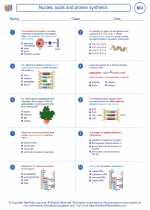
 Worksheet/Answer key
Worksheet/Answer key
 Worksheet/Answer key
Worksheet/Answer key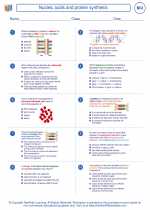
 Worksheet/Answer key
Worksheet/Answer key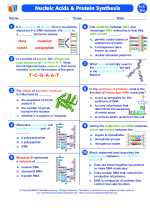
 Vocabulary/Answer key
Vocabulary/Answer key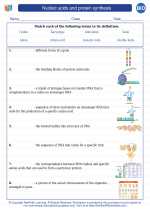
 Vocabulary/Answer key
Vocabulary/Answer key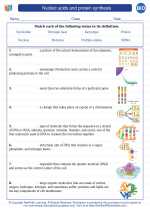
 Vocabulary/Answer key
Vocabulary/Answer key